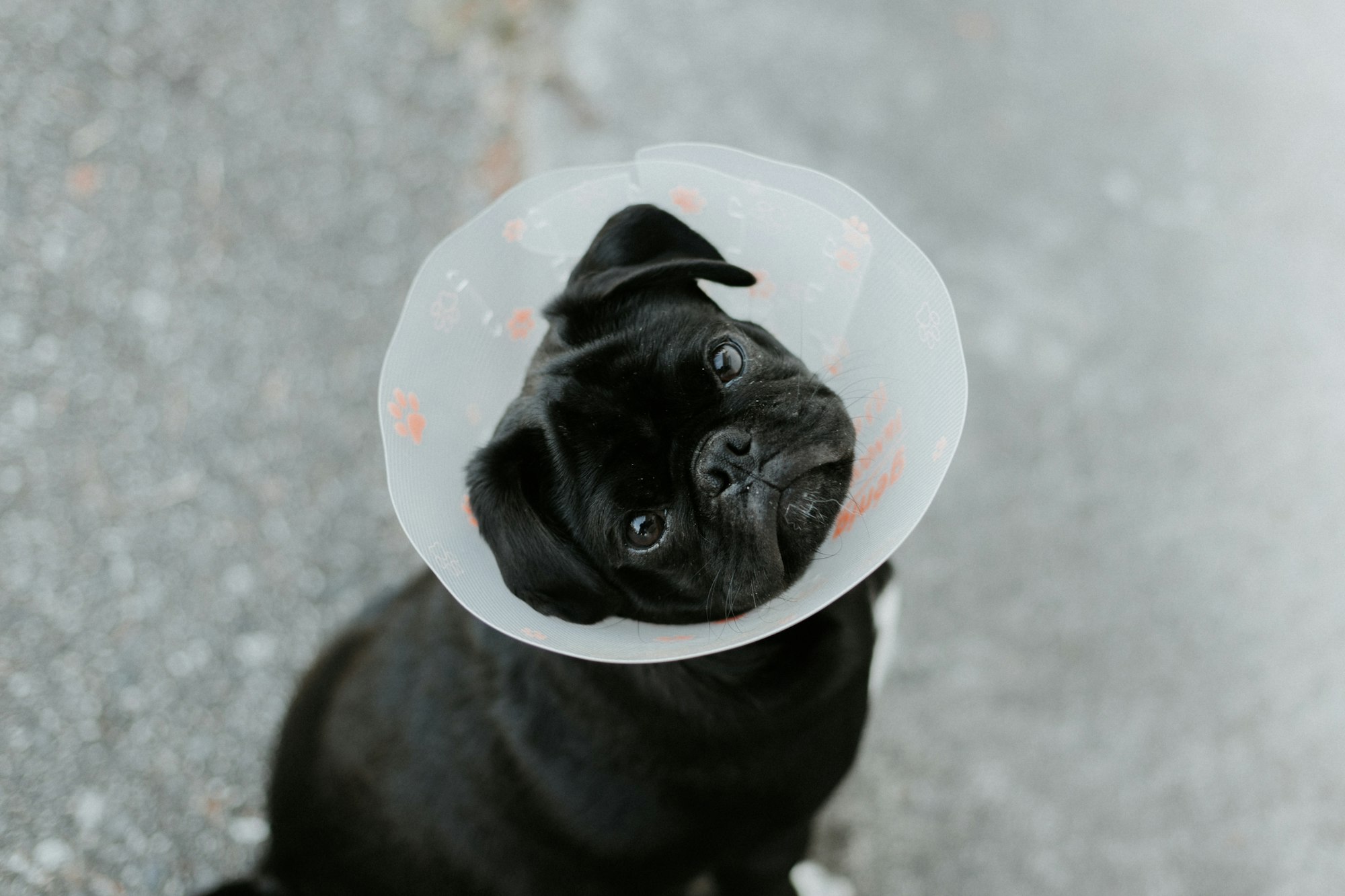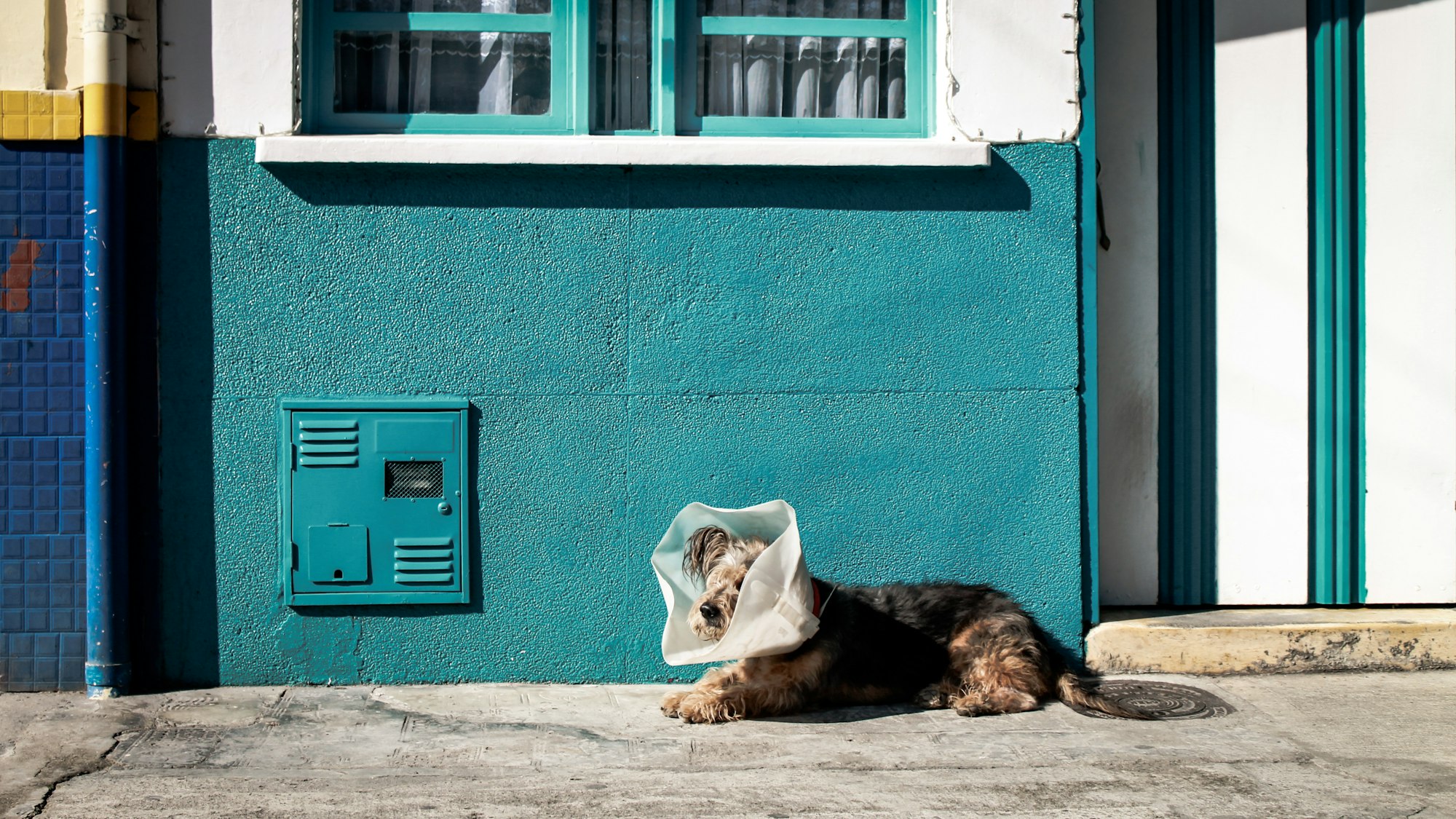An Elizabethan collar, also known as an E-collar or cone, is a medical device that is commonly used to prevent dogs from licking or biting their wounds after surgery or injury. While it can be uncomfortable for your dog to wear, it is important to ensure that they do not interfere with the healing process by licking or biting at their wounds. Here are some steps to follow to help you put an Elizabethan collar on your dog.
Note: It is recommended to have another person help you while putting on the collar to ensure the safety of your dog.
How to Fit an Elizabethan Collar to Your Dog
Fitting an Elizabethan collar properly is important to ensure that it is effective in preventing your dog from licking or biting their wounds. Here are some steps to follow to help you fit an Elizabethan collar to your dog:
Choose the right size: Elizabethan collars come in various sizes, so it is important to choose the right size for your dog. Measure the circumference of your dog's neck at its widest point and choose a collar that is slightly larger than this measurement.
Prepare the collar: Before putting the collar on your dog, make sure it is properly assembled and all tabs and fasteners are secure.
Place the collar: Place the collar around your dog's neck, making sure that it is positioned correctly. The collar should extend past the end of your dog's nose, but not be so long that it restricts their movement or vision.
Fasten the collar: Fasten the collar securely using the tabs or fasteners provided. Make sure that the collar is snug but not too tight, and that your dog can breathe comfortably.
Adjust the fit: Once the collar is fastened, check that it is positioned correctly and adjust the fit if necessary. You should be able to fit two fingers between the collar and your dog's neck, but not more.
Observe your dog: Observe your dog to make sure that they are comfortable and can move around freely. It is common for dogs to feel a bit uneasy when first wearing the collar, so offer them some treats or toys to distract them and help them get used to it.
By following these steps, you should be able to fit an Elizabethan collar properly to your dog and ensure that they are protected from licking or biting their wounds.

Why Do Dogs Need Elizabethan Collars?
Dogs may need to wear Elizabethan collars for a variety of reasons, but the most common reason is to prevent them from licking or biting at their wounds. Here are some reasons why dogs may need to wear Elizabethan collars:
After surgery: Dogs who have undergone surgery may need to wear an Elizabethan collar to prevent them from licking or biting at their incision site, which could lead to infection or other complications.
Due to skin allergies: Dogs with skin allergies may develop hot spots or other skin irritations that can be aggravated by licking or biting. An Elizabethan collar can prevent the dog from irritating the affected area and allow it to heal.
To prevent self-harm: Dogs who are anxious or stressed may resort to self-harm by licking or biting themselves excessively. An Elizabethan collar can prevent them from causing harm to themselves.
To prevent them from eating foreign objects: Some dogs have a habit of eating things they shouldn't, such as socks, toys, or other objects. An Elizabethan collar can prevent them from accessing these objects and potentially causing harm to themselves.
Overall, Elizabethan collars can be an effective tool for preventing dogs from licking or biting at their wounds, and helping them to heal more quickly and safely.
Preparing for an Elizabethan Collar
- Purchase the appropriate size of Elizabethan collar for your dog's neck circumference.
- Ensure that the collar is properly assembled and all tabs and fasteners are secure.
Fitting the Elizabethan Collar
- Place the collar around your dog's neck, making sure it is positioned correctly and extends past the end of your dog's nose.
- Fasten the collar securely, making sure it is snug but not too tight.
- Adjust the fit as needed, ensuring that you can fit two fingers between the collar and your dog's neck.
Wearing the Elizabethan Collar
- Observe your dog to make sure they are comfortable and can move around freely.
- Offer treats or toys to help your dog get used to wearing the collar.
- Keep an eye on your dog's behavior, as some dogs may try to scratch or paw at the collar, and make adjustments as necessary to ensure their safety and comfort.
- Follow any additional instructions provided by your veterinarian, such as how long your dog needs to wear the collar and any care instructions for the wound being protected.
Eating and Drinking While Wearing Elizabethan Collar

When a dog is wearing an Elizabethan collar, it can be more difficult for them to eat and drink normally. Here are some tips to help your dog eat and drink while wearing an Elizabethan collar:
Food:
- Elevate their food bowl: Try elevating your dog's food bowl to make it easier for them to reach their food without bending their neck too much. You can use a raised feeder or place their bowl on an elevated surface, such as a chair or table.
- Use a slow-feeder bowl: Slow-feeder bowls can help prevent your dog from eating too quickly and make it easier for them to eat without the collar getting in the way.
- Hand-feed or offer smaller, more frequent meals: If your dog is having trouble eating, try hand-feeding them or offering smaller, more frequent meals throughout the day.
Water:
- Use a water bowl with a wide opening: A water bowl with a wide opening can make it easier for your dog to drink without the collar getting in the way.
- Offer water in smaller amounts: Instead of offering a full bowl of water, offer smaller amounts of water throughout the day to prevent spills and make it easier for your dog to drink.
- Use a water bottle or syringe: If your dog is having difficulty drinking from a bowl, you can try offering water through a water bottle or syringe.
It is important to monitor your dog's food and water intake while they are wearing an Elizabethan collar to ensure that they are getting enough to eat and drink.
Using Positive Reinforcement to Help
Positive reinforcement is a training technique that uses rewards to encourage desired behavior in dogs. It is a humane and effective way to train dogs, as it focuses on rewarding good behavior rather than punishing bad behavior. Here are some tips for using positive reinforcement to train your dog:
Use treats: Treats are a great way to reward your dog for good behavior. Use small, soft treats that your dog can eat quickly and easily, and offer them immediately after your dog performs the desired behavior.
Be consistent: Consistency is key when using positive reinforcement. Make sure to reward your dog every time they perform the desired behavior, and use the same command or cue each time.
Use praise and affection: In addition to treats, praise and affection can also be effective rewards for good behavior. Use a happy, upbeat tone of voice to praise your dog, and give them plenty of attention and affection.
Keep training sessions short: Dogs have short attention spans, so it's important to keep training sessions short and focused. Aim for 5-10 minutes of training per session, and gradually increase the length of the sessions as your dog becomes more comfortable with the training.
Don't punish bad behavior: Positive reinforcement focuses on rewarding good behavior, rather than punishing bad behavior. If your dog performs an undesirable behavior, simply ignore it or redirect their attention to a more desirable behavior, and then reward them for that behavior.

Should I Take an Elizabethan Collar Off at Night?
It is generally recommended to keep an Elizabethan collar on your dog at all times, including at night. While it may be tempting to remove the collar to allow your dog to sleep more comfortably, doing so could put them at risk of interfering with their wounds during the night. Additionally, if your dog is not used to wearing the collar, removing it at night could make it more difficult for them to adjust to wearing it during the day.
If you are concerned about your dog's comfort while wearing the collar, there are some things you can do to help them sleep more comfortably:
Provide a comfortable sleeping area: Make sure your dog has a comfortable place to sleep, such as a soft bed or crate with a cozy blanket.
Use calming aids: Calming aids, such as a pheromone diffuser or calming music, can help your dog relax and sleep more soundly.
Monitor your dog: Keep an eye on your dog while they are sleeping to ensure that they are comfortable and not agitated by the collar. If your dog seems uncomfortable or distressed, contact your veterinarian for advice.
Ultimately, the decision to take an Elizabethan collar off at night should be made in consultation with your veterinarian, who can advise you on the best course of action based on your dog's individual needs and condition.
Get more expert advice on pet-parenting by visiting the Off Leash blog at TryFi.com.
TryFi's The Fi Dog Collar is a must-have for any pet parent, it's a GPS tracking collar that helps you keep tabs on your dog's location, activity, and sleep patterns, and alerts you if they escape your backyard. Try the Fi Dog Collar today!





